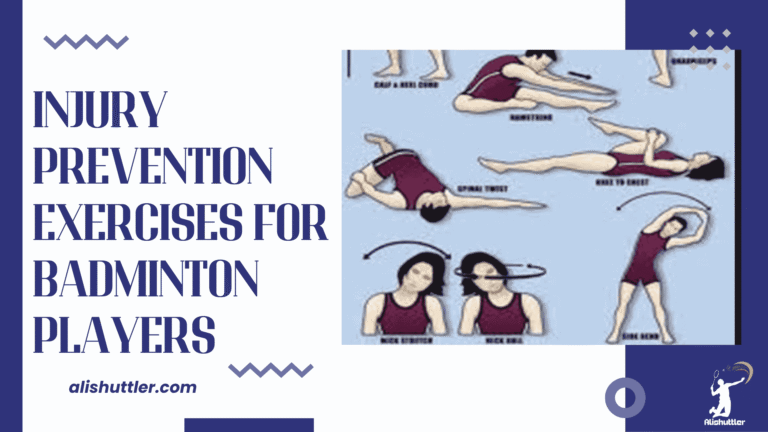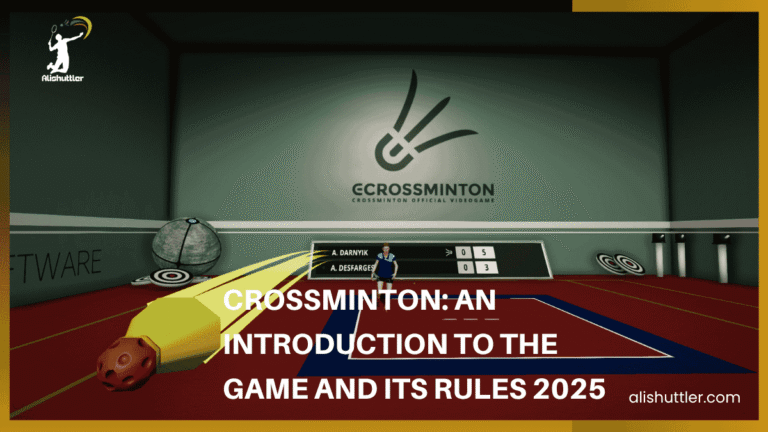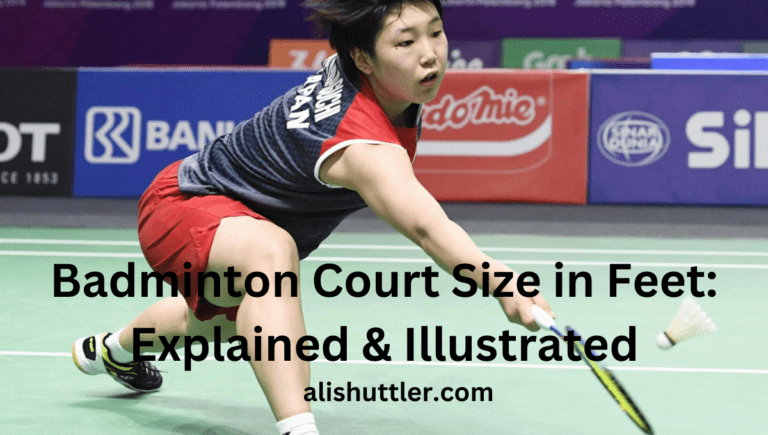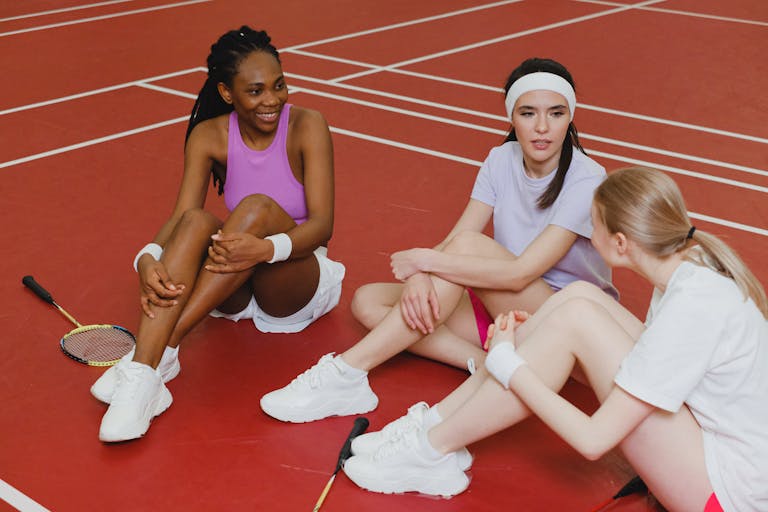Badminton shuttlecocks are small, cone-shaped projectiles used in the game of badminton. Each Badminton shuttlecock features a rounded cork base and a feather or synthetic skirt.
Various types suit varying styles of play and skill levels–from practice to tournament play. Badminton players tend to choose shuttlecocks by their durability, flight stability and speed.
Understanding these key characteristics allows you to select the best shuttlecock for each match. The body will dissect these types and provide tips.
Shuttlecock Anatomy
Shuttlecock anatomy governs speed, stability, and flight path in the Badminton shuttlecock. Two components, the cork base and skirt, collaborate for optimal performance. Material selection, construction, and design all influence the shuttle’s performance and remember.
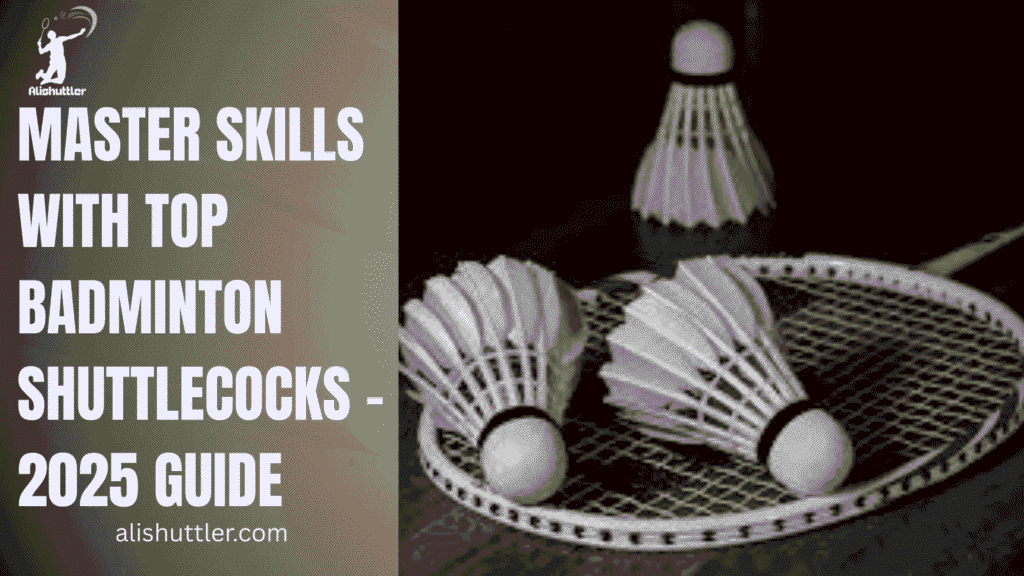
The Cork Base
The cork base is a circular, dense component of the bottom. Its shape, with a diameter typically between 25 and 28 mm, stabilizes the shuttle on impact and allows it to spin correctly. Subtle roundness can alter how the shuttle flies or drops.
High-grade cork lasts longer and holds its form better than lower-grade varieties. Most premium Badminton shuttlecocks employ natural cork, not synthetic blends, to provide a more solid hit and steadier bounce.
Cork weight is key for speed and control. Heavier cork, more control – it slows the shuttle down so you can actually aim it, while a lighter cork speeds it up. For pro play, cork and feathers combined weigh approximately 4.74-5.50 grams, and each feather weighs 1.7-2.1 grams.
Employees stick the feathers down into the cork. This procedure requires caution so feathers don’t loosen. The drying of the glue can take hours or even days, which helps the shuttle to last longer and stay balanced.
The Skirt
The skirt is the feather portion, typically 16 goose or duck feathers, arranged in an overlapping fashion to form a cone. The skirt’s construction and fabric form directs air around it which regulates flight and drag. Feather gaps create drag, which slows the shuttle down and makes it drop quickly, a feature exploited in gameplay.
Feather skirts, like they use in the pro games, act different than synthetics. Feather skirts cause the shuttle to decelerate and turn a specific way. Synthetic skirts are constructed from nylon or other plastics. They don’t equal feather flight but are more durable and economical.
The skirt length, typically 62 mm to 70 mm, is graded for velocity. Longer skirts assist the shuttle to fly slower and more stable, while short skirts increase speed but can wobble more. Pro shuttles utilize goose feathers of uniform length, from 62 mm to 77 mm.
Quality makes a difference in shuttle life. One snapped feather can destroy the trajectory, rendering the shuttle unserviceable in competitive play.
Feather Versus Synthetic
Badminton shuttlecocks come in two main types: feather and synthetic. Both provide unique variation in flight, durability, feel and price. They’re the same size and weight, but the design and materials distinguish them. The table below compares key features:
| Feature | Feather Shuttlecock | Synthetic Shuttlecock |
|---|---|---|
| Flight Path | Stable, predictable, natural curve; tight drag coefficient range | Consistent but less stable at high speed; scattered drag data |
| Durability | Wears out faster, especially at high impact | Longer lasting, less prone to breakage |
| Player Feel | Softer, tactile, often preferred for control | Firmer, can feel plastic-like, less feedback |
| Cost | Higher upfront and over time | Lower cost per unit, better value for frequent use |
Flight Path
Feather shuttlecocks generate a steady, fluid flight that plummets, due to their elevated drag coefficient—circa 0.62 at greater than 100 km/h. This makes them obvious to expert players.
Synthetic shuttlecocks, with a drag coefficient nearer to 0.59, typically exhibit more dispersed values, indicating their flight is less consistent. Environmental factors such as humidity and wind affect the trajectories of both shuttlecock types.
Feather ones maintain better consistency. Synthetic ones may become misshapen and respond to the wind in unpredictable ways, making play less predictable. Between the two, it usually comes down to whether a player appreciates consistency at speed.
High level play or training where shot precision comes into play generally lean towards feathers. Fun courses or scrambles with lots of rookies can probably do just fine with synthetic.
Durability
Synthetic shuttlecocks are known for their durability. They last longer, even with heavy use, a smart choice for clubs or anyone who plays a lot. Feather shuttlecocks, although coveted for their playability, begin to break down after only a handful of games.
This is evident at every level of ability, but especially for power players or daily grinders. Some folks attempt to eke out feather life with rigorous storage and bags of tender loving use. Easy things, like keeping them dry and rotating between shuttles, will contribute.
Still, feathers won’t beat synthetic durability if you play a lot. If you play sparingly, then feather breakage might not be such a big deal. Anybody pounding the court multiple days a week will likely save cash and inconvenience with synthetic.
Player Feel
A lot of player’s report feather shuttlecocks felt softer and provided better feedback on the racquet. Shots sail with a little more finesse, assisting with drop shots or net play.
Feathers respond differently upon impact than the rubber skirts on synthetics, which can feel inelastic or less reactive. Others like the snappy feel of synthetic birdies, particularly for rapid fire rallies, but others feel it’s too fake.
The touch can make or break your confidence, and cozy with a shuttlecock is as individual as your grip method. Novices and weekend warriors won’t feel these subtle distinctions immediately.
As skills mature, many begin to give a damn about tactile feedback, and their loyalties can change.
Cost
Feather shuttlecocks are more expensive initially and need replacing earlier, so they’re a greater investment. For casual players this may not matter. For everyday games, the price racks up quickly.
Synthetic shuttlecocks are cheaper and more durable, so clubs and schools tend to use them to reduce expenses. The compromise is that the play experience isn’t identical, but for a lot of people, savings are more important.
It’s uncommon that recreational players find justification for pricey feather shuttles unless they crave that pro-like sensation.
The Selection Process
Selecting the appropriate badminton shuttlecock comes down to pairing it with your ability, your venue, your technique, and your finances. Each step ensures you’re not simply guessing, but selecting what lets you play your best, whether you’re a professional, newbie, or somewhere in the middle.
1. Assess Your Skill
First, know your skill level! New players tend to prefer synthetic shuttlecocks because they’re more durable and cheaper. Goose or duck feather shuttlecocks, preferred by experienced players for their flight, deteriorate more quickly and are more expensive. Competitive play almost always uses feather shuttles, so if you’re going into tournaments, prepare to use those.
Consider what your strong and weak points are. If you hit hard but without much control, a slower shuttle can help you keep rallies going. If quickness is your advantage, you can accommodate your game with a quicker shuttle. Coaches or veteran friends can provide frank feedback, particularly if you’re uncertain what kind of fit your improvement.
Speed testing shuttles is integral in numerous formal contexts – occasionally you’ll observe shuttles launched from a cannon at a particular angle for the purpose of determining whether its velocity aligns with the requirement. In tournaments, referees will request new shuttles if the batch doesn’t fly up to snuff.
2. Consider Your Environment
Where you play transforms everything. Inside, where draft and climate are constant, most shuttlecocks are fine. Outdoors, wind and weather can derail flight. Artificial shuttles cope with playing outside better.
Weather counts as well. In hot or mountainous locations shuttlecocks fly quicker, so slower ones (lower speed numbers, like 73-75) are selected. Cold or low spots require quicker shuttles (higher numbers, to 80). Some players and coaches even test shuttles from both ends of the court before a match to see if the speed remains consistent. If not, switch to keep it fair.
Altitude can cause a shuttlecock to zip or drag. Players in the mountains will have to experiment with different types and speeds to see what works. So, don’t forget to always season your selection to the season, local climate or even the hall you utilize.
3. Match Your Playstyle
Smashers like shuttles that react quick and fly straight, like premium feather varieties. Defensive players might prefer robust, a bit slower synthetic shuttles to keep rallies going.
A shuttlecock that matches your style makes your shots feel more natural and gives you confidence. If you’re at ease, you’ll ace it. Experiment with various brands, models and speed ratings. A lot of players try a few before selecting a favorite, because not all shuttles ‘play’ the same.
4. Set Your Budget
Determine your budget. Feather shuttles are more expensive, but required for top-tier competition. Synthetic ones are more economical for daily workout.
Contrast brands and prices. If you play frequently, purchase a wholesale lot to save. Your play rate should dictate your purchase. You’ll need more if you’re playing daily, so plan accordingly.
Understanding Speed Ratings
Speed ratings assist athletes select the proper badminton shuttlecock for their ability and setting. These ratings, rated from 75 (slow) to 79 (fast), influence how the shuttle moves through the air, its speed, and how controllable it is.
The correct speed rating can turn a match around, so it’s crucial for players to know what these figures actually mean before they select their shuttlecock.
| Speed Rating | Flight Speed | Best For | Player Level | Climate/Altitude |
|---|---|---|---|---|
| 75 | Slow | High altitudes, hot climates | Beginners | High/Hot |
| 76 | Medium-Slow | Mild altitude, mild heat | Recreational | Mild |
| 77 | Medium | Cool or normal conditions | Intermediate | Temperate |
| 78 | Medium-Fast | Temperate climates | Most players | Moderate |
| 79 | Fast | Low altitudes, cold climates | Advanced/Professional | Low/Cold |
Speed Numbers
Speed ratings indicate how quickly or slowly a shuttle will fly. A speed 75 shuttlecock will fly slower, thus be more controllable, and is suitable for amateurs or high altitude play.
Larger numbers such as 79 represent that the shuttlecock is moving faster. Experienced players use them a lot because they’re able to keep up with the fast speed.
Picking the right speed number is important for every skill level. A speedy shuttle can be hard to keep inbounds for a novice. Recreational players like a 76 or 77 as those provide a nice balance between speed and control.
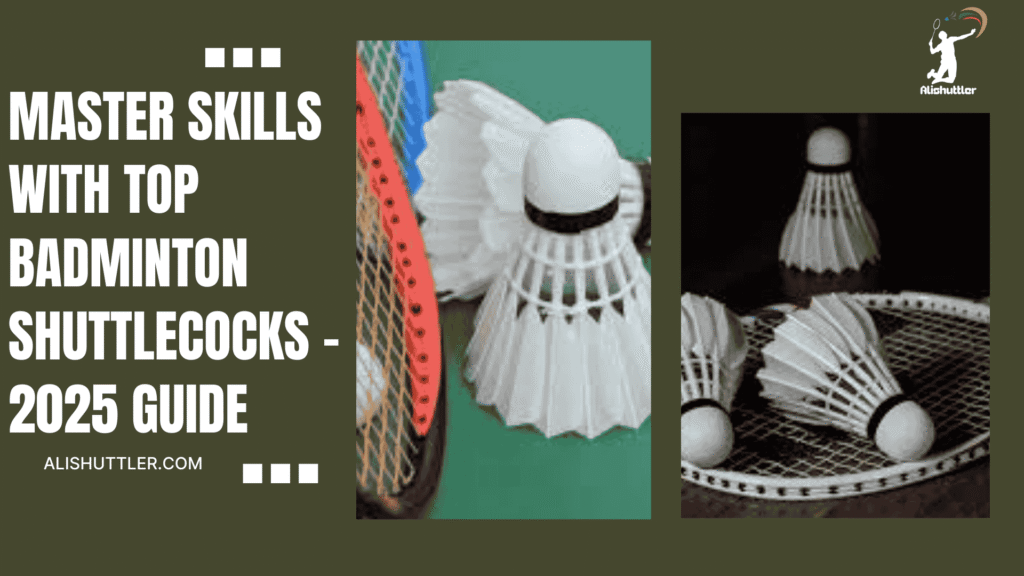
Advanced players may desire a 78 or 79 for a quicker game. Speed ratings may vary even between brands or between goose and duck feather shuttlecocks.
What one brand deems a 77, another might rate a bit differently because of subtle variations in weight or feather quality. Trying a couple speed numbers is the best way to discover what suits your play style and court conditions.
Altitude Impact
Altitude is a huge factor in shuttlecock flight. Higher up the air thins and shuttles speed on their way. Players in mountain cities or other high-altitude areas tend to grab lower speed shuttlecocks, such as 75 or 76, to even the playing field and keep the rallies manageable.
At low altitudes, the air is denser and the shuttle will therefore be slowed down. If you’re using a speed rating of 78 or 79 or something higher, it helps keep the game at the appropriate pace.
Air density at altitude affects the shuttle’s touch and responsiveness, so be sure to verify local conditions. By way of choosing shuttlecocks, pay attention to your local altitude.
If you’re not certain, consult with others at your club or experiment with a few different ratings.
Temperature Impact
Temperature fluctuations alter shuttlecock play. In hot weather, shuttles go faster, so a slower speed rating is ideal. Cold air thickens to slow the shuttle so a faster rating is necessary.
Humidity can weigh down shuttles, requiring increased speed to compensate. It’s smart to select a shuttle that performs well in the temperature you play most.
A few brands manufacture shuttlecocks designed to withstand a variety of conditions, but be sure to check the label or inquire first. Heat and cold can damage shuttle longevity.
Putting them in cool dry storage actually keeps them in better shape and maintains speed.
Extending Shuttlecock Life
Shuttlecocks, as you might imagine, get used up quickly. Even one feather splitting or breaking can change the flight, making it wobble. A few baby steps to stretch their life is money saved and play maintained. Players and clubs can adopt simple routines to decelerate the degradation and stabilize performance.
- Store shuttlecocks in tubes with lids to maintain humidity.
- Store in cool spaces, between 10°C – 25°C is best.
- Avoid leaving shuttlecocks in direct sunlight or near heaters.
- Use protective cases or containers for transport.
- Inspect the tubes regularly for moisture—introduce a damp sponge if air is dry.
Proper Storage
Direct sun, hot air or cold drafts can dry out feathers quick. Shuttlecocks love cool and consistent temps. Extreme heat or cold renders them brittle and fragile. Storing them at 10-25°C keeps the feathers soft and less prone to snapping.
Humidity counts as well. Low humidity desiccates shuttlecocks, causing feathers to splinter or snap. Dry air is prevalent in winter or in air-conditioned environments. If the air is dry, place a little piece of damp sponge inside the tube.
In high humidity, additional moisture is not necessary—excess can weigh down shuttlecocks and slow them down. Cases or tubular lids protect shuttlecocks from being damaged – crushed, bent, etc. – while transported. Shuttlecocks should never be thrown loose in a bag or left on hard floors.
Small dents or bends alters how they fly. Sunlight discolours and weakens feathers. Keep shuttlecocks in the dark, away from windows or bright lights.
Pre-Game Hydration
- Steam shuttlecocks over boiling water for 30 – 60 seconds.
- Hoist your kettle and tube, complete with lids, for optimal control.
- Hydrate only what you’ll need the next day.
- Leave steamed shuttlecocks sealed for 12 hours before play.
- Skip steaming in wet seasons to avoid heavy shuttlecocks.
Check your shuttlecocks before play. Steaming makes them softer and less prone to cracking, particularly in dry or cold environments. If you live where the air is dry, pre-game hydration is the key.
Too much water can weigh down the shuttle and affect its velocity. Do not steam in humid weather. Humidity makes feather shuttlecocks fly. Too dry, and they crack. Too wet, and they get sluggish. The proper equilibrium translates into a more stabilizing flight and extended service life.
Make pre-game care a ritual. A couple minutes before each session can go a long way toward more games per shuttlecock.
Smart Rotation
- Mark shuttlecocks and set up a simple use schedule.
- Rotate between at least three Badminton shuttlecocks in practice.
- Use older shuttlecocks for warm-up or drills.
- Track which shuttlecocks show early signs of wear.
Rotating the Badminton shuttlecock distributes wear. Using the same shuttle for every rally results in early breaks. Rotating shuttles every game or session prevents feathers from being struck in the same spot too frequently and dramatically reduces wear.
Mixing types in practice helps. Utilize lower-grade/used shuttlecocks for drills and save the premier ones for match play. This helps high-quality shuttles to last longer.
- Number your shuttlecocks so you know which ones are older.
- Monitor little tears or lost feathers.
- Swap out shuttlecocks the second they go awry or begin to wobble.
The Sustainability Factor
Badminton shuttlecocks, they’re tiny, insignificant things they factor into a much larger sustainability discussion. With over 200 million players globally, the scale of shuttlecock manufacture and waste presents actual environmental issues. Most conventional shuttlecocks are made of feathers and cork, and manufacturing them requires extensive raw materials.
This frequently results in waste, particularly as feather shuttlecocks are delicate and deteriorate quickly. Once utilized, a lot make it to the landfill, contributing to the growing sports waste mountain. Plastic shuttlecocks are more durable and last longer when playing, so they’re often used for casual games or practice.
Although they can help reduce waste as they don’t break as easily, their manufacture is fossil-fuel based. Throwing away busted plastic shuttlecocks is an issue as well, because plastic doesn’t decompose readily. While feather and plastic shuttlecocks are both environmentally impactful, they do so in different ways.
Bringing attention to these impacts is an important initial step to shift. Innovations are beginning to make inroads in shuttlecock design. Other brands are attempting to utilize recycled plastics or plant-based materials, which does reduce the carbon footprint.
All of these new materials satisfy players’ needs and are more kind to the environment. Fixable or reusable shuttlecocks are gaining traction. Convenient access to repair tools and transparent guides remains elusive, since not every maker discloses this information.
This leaves an opening for people who insist on repairing and preserving their shuttles a little longer rather than toss them out. Players and clubs can assist by opting for eco-friendly shuttlecocks and bulk purchasing. Buying in bulk can reduce shipping emissions and packaging waste.
Certain locations are even initiating shuttlecock recycling initiatives, where old shuttlecocks are recycled into raw materials. Though not yet widespread, these types of programs are encouraging and can assist in establishing new habits. On the broader scale, sports halls and clubs are seeking to curtail energy consumption and waste, greening the sport as a whole.
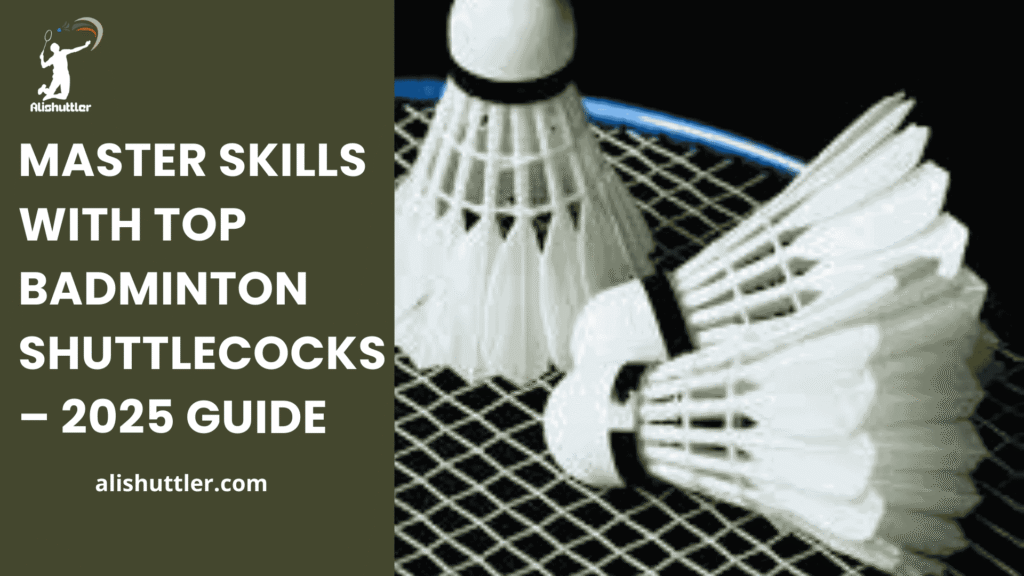
Final Thoughts on Badminton shuttlecock
Badminton shuttlecock requires equipment that matches your style, speed, and caliber. the Badminton Shuttlecocks are a huge factor in the feel of every match. Feather and synthetic each have their advantages. Speed markings do affect gameplay. Little things, such as dry storage and careful use, can prolong shuttle life.
Options now impact the planet, so a lot of players opt for eco-friendly selections. Next time you re-up, use what you know to get the perfect fit for your matches. Have a tip or want to share your go-to shuttle? Leave your thoughts in the comments below, let’s make the Badminton shuttlecock community smarter and more exciting as a team!
Frequently Asked Questions
What are the main parts of a badminton shuttlecock?
A badminton shuttlecock consists of a rounded cork base and a skirt. The skirt is comprised of either feathers or synthetic materials and creates the cone shape that assists with flight.
How do feather and synthetic shuttlecocks differ?
Feather shuttlecocks employ actual bird feathers provide more uniform flight. Synthetic shuttlecocks, on the other hand, are composed of nylon or plastic and have the advantage of greater longevity, which is perfect for novice players or playing outdoors.
How do I choose the right shuttlecock for my game?
Take into account skill level, unfolding environment and budget. Feather shuttlecocks are ideal for high level indoor play, whereas synthetic ones work well in casual or outdoor games because of their durability.
What does shuttlecock speed rating mean?
Speed ratings represent how quickly and far the shuttlecock flies. Larger numbers indicate higher speed. Select a rating corresponding to your playing conditions like altitude and temperature.
How can I extend the life of my shuttlecocks?
Keep shuttlecocks in a cool, dry environment and don’t crush them. For feathers, maintain them slightly damp or they will become brittle and break.
Are badminton shuttlecocks eco-friendly?
The synthetic shuttlecocks biodegrade less. Feather shuttlecocks utilize organic but typically avian-based materials. Certain brands provide sustainable shuttlecocks to reduce their footprint on the planet.
Can I use the same shuttlecock for both indoor and outdoor play?
We find it’s best to play with synthetic shuttlecocks outside because they refuse to succumb to wind or destruction. Feather shuttlecocks are delicate and they are susceptible to outdoor elements and therefore perform better indoors.

